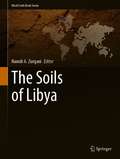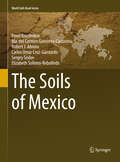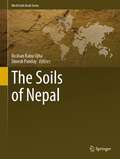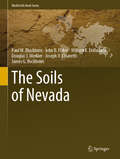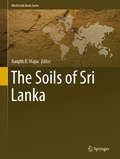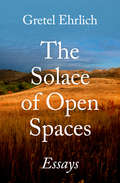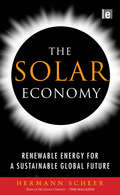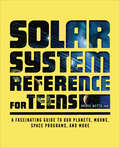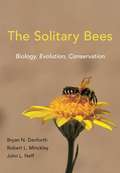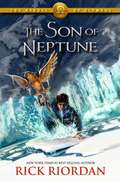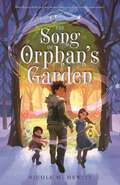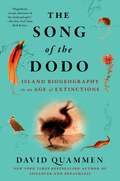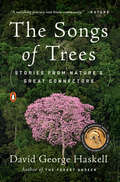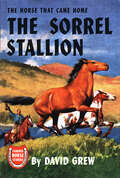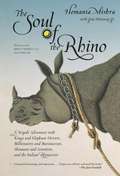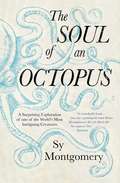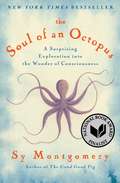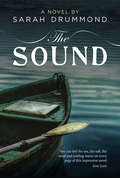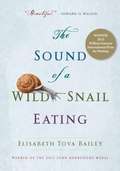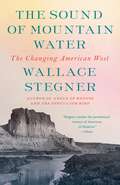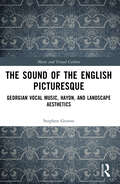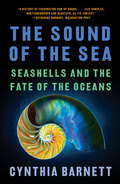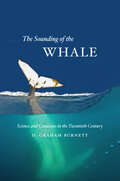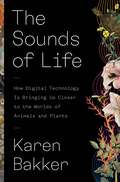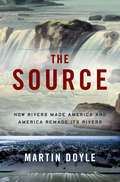- Table View
- List View
The Soils of Libya (World Soils Book Series)
by Hamdi A. ZurqaniThis book presents the soil pedodiversity in Libya. Soils are the source of all life; there can be no life without them. Further, each soil has its own history and its present conditions, which have been shaped by many different factors (e.g. climate, biota, parent material, and relief or topography). The book, divided into eight chapters, provides extensive information on Libyan soils. Chapter one provides an introduction and a broad perspective of the subject, while Chapter two covers the history of soil mapping and research in Libya. Chapter three focuses on local factors of soil formation and describes the geology and climate of the region to explain the diversity of its soils. Chapter four discusses soil classification systems and those most commonly used in the country. The fifth chapter illustrates the constraints and limiting factors that negatively affect agricultural activities across the country. The land cover/land use and the vegetation of the country are described in Chapter six. In turn, Chapter seven presents the status quo of soil biology, the corresponding related research activities, and the other biological properties of Libyan soils. The final chapter (Chapter eight) focus on land degradation and desertification in Libya, emphasizing the main causes, impacts of the phenomena, and efforts to combat it. This book demonstrates the problems that the country is currently facing as a result of climate change, soil erosion, salinization, and pollution, and outlines potential remedies to improve local food security. Bringing together the perspectives and expertise of many distinguished scientists from various universities and institutions in and outside of Libya, the book represents a unique and highly valuable resource.
The Soils of Mexico
by Carlos Omar Cruz-Gaistardo Elizabeth Solleiro-Rebolledo Ma. del Gutiérrez-Castorena Pavel Krasilnikov Robert J. Ahrens Sergey SedovMexico is an extensive country with an extremely complex mosaic of landscapes. The soils of Mexico have still not been completely studied, and there are few publications available on this subject. This book provides a state-of-the-art view on Mexican soils, their geographical distribution, their use and degradation. This is a first attempt to give a systematized characteristic of the soil resources of Mexico. Land resources of the second-biggest economy in Latin America are critical for its sustainable development, and a demand for adequate soil information is high. The information contained within can be used for any soil-related research done in Mexico and in neighboring countries. The book includes detailed characteristics of soils of all the physiographic regions of Mexico with maps, photos and explanatory schemes. The book is based on the experiences of the authors in research and soil survey, as well as on the existent, mainly 'grey' literature on Mexican soils. The book is recommended for researchers and university readers, students of all levels and decision-makers, working in the area of soil science, environmental issues, Earth sciences, land management and nature conservation.
The Soils of Nepal (World Soils Book Series)
by Roshan Babu Ojha Dinesh PandayThis book publishes consolidated information on the soils of Nepal from all possible sources. The Survey Department, Government of Nepal, conducted two national scale soil survey projects to classify soils of Nepal (Land Resource Mapping Project ended in 1985, and National Land Use Planning Project ended in 2021). Both projects adopted the United States Department of Agriculture system of soil classification. Besides, National Soil Science Research Center (previously known as Soil Science Division) of Nepal Agricultural Research Council and Soil Management Directorate, Department of Agriculture, also worked on soils of Nepal. To date, the information on the soils of Nepal is not published in well-documented form but has been reported widely as gray literature (project report or government report) or peer-review articles.'The Soils of Nepal’ is a part of ‘World Soils Book Series’ which constitutes twelve chapters—covering broad aspects such as soil research history, climate, geology, soil classification and mapping, and soil fertility. Furthermore, information about soil properties and relation between soil constituents of the dominant soil types of Nepal and their scope of use in the context of land use are described. This book also tries to simplify the intricate relationship among soil, culture, and people. Each chapter contains a comprehensive, richly illustrated, and up-to-date overview of the soils of Nepal. We believe it fulfils a quest for a global audience including students, educators, extension workers, and soil scientists, who are interested to know the young soils of Nepal.
The Soils of Nevada (World Soils Book Series)
by James G. Bockheim Joseph V. Chiaretti Paul W. Blackburn John B. Fisher William E. Dollarhide Douglas J. MerklerThis book discusses Nevada in the context of the history of soil investigations; soil-forming factors; general soil regions; soil geomorphology; taxonomic structure of the soils; taxonomic soil regions; soil-forming processes; benchmark, endemic, rare, and endangered soils; and use of soils.With an average mean annual precipitation of 175 mm (7 in), Nevada is the driest state in the USA. More than three-quarters (89%) of the state has been mapped and the first soil survey was completed in 1909. Nevada is divided into 10 major land-resource areas and features two large deserts (the Great Basin Desert and the Mojave Desert), and over 100 north–south trending enclosed basins separated by mountain ranges (Basin and Range Province), several of which have peaks exceeding 3,400 m. Further, the soils of Nevada represent seven of the 12 globally recognized orders, 29 suborders, 69 great groups, and over 1,800 soil series, and some of the classic research on the origin of duripans and petrocalcic horizons was conducted in the state. This book presents the first report on the soils of Nevada and provides the first soil map of Nevada utilizing soil.
The Soils of Sri Lanka (World Soils Book Series)
by Ranjith B. MapaThis book presents a comprehensive and up-to-date overview of the soils of Sri Lanka. Including sections on the soil research history, climate, geology, geomorphology, major soil types, soil maps, soil properties, soil classification, soil fertility, land use and vegetation, soil management, soils and humans, soils and industry, and future soil issues, the book summarizes the current state of knowledge in a concise and highly reader-friendly way.
The Solace of Open Spaces: Essays
by Gretel EhrlichThese transcendent, lyrical essays on the West announced Gretel Ehrlich as a major American writer—&“Wyoming has found its Whitman&” (Annie Dillard). Poet and filmmaker Gretel Ehrlich went to Wyoming in 1975 to make the first in a series of documentaries when her partner died. Ehrlich stayed on and found she couldn&’t leave. The Solace of Open Spaces is a chronicle of her first years on &“the planet of Wyoming,&” a personal journey into a place, a feeling, and a way of life. Ehrlich captures both the otherworldly beauty and cruelty of the natural forces—the harsh wind, bitter cold, and swiftly changing seasons—in the remote reaches of the American West. She brings depth, tenderness, and humor to her portraits of the peculiar souls who also call it home: hermits and ranchers, rodeo cowboys and schoolteachers, dreamers and realists. Together, these essays form an evocative and vibrant tribute to the life Ehrlich chose and the geography she loves. Originally written as journal entries addressed to a friend, The Solace of Open Spaces is raw, meditative, electrifying, and uncommonly wise. In prose &“as expansive as a Wyoming vista, as charged as a bolt of prairie lightning,&” Ehrlich explores the magical interplay between our interior lives and the world around us (Newsday).
The Solar Economy: Renewable Energy for a Sustainable Global Future
by Hermann ScheerThe global economy and our way of life are based on the exploitation of fossil fuels, which not only threaten massive environmental and social disruption through global warming but, at present rates of consumption, will run out within decades, causing huge industrial dislocation and economic collapse. Even before then, the conflicts it causes in the Middle East and elsewhere will be frighteningly exacerbated. The alternative exists: renewable energy from renewable sources - above all, solar. Substituting renewable for fossil resources will take a new industrial revolution to avert the worst of the damage and establish a new international order. It can be done, and it can be done in time. The Solar Economy, by one of the world's most effective analysts and advocates, lays out the blueprints, showing how the political, economic and technological challenges can be met using indigenous, renewable and universally available resources, and the enormous opportunities and benefits that will flow from doing so.
The Solar System Reference for Teens: A Fascinating Guide to Our Planets, Moons, Space Programs, and More
by Dr. Bruce BettsTake a tour of our solar system with this guide for teens ages 12 to 16 From the moons of Jupiter to the surface of Mars, our solar system is home to a multitude of wild, weird worlds. Crack open this solar system book and embark on a journey through space as you meet key figures in history, explore careers in astronomy, uncover some of the solar system's biggest mysteries, and more. Tons of images—Bring celestial objects into focus through more than 160 images, illustrations, and diagrams that provide a close-up look into our solar system and how it works. Fascinating facts—Did you know the Moon gets farther from Earth each year at about the same rate that your fingernails grow? Discover all sorts of awe-inspiring facts about our solar system's planets, moons, and more. Exciting exploration—Learn about important historical achievements and technological developments—including missions to different parts of the solar system—and get tips for your own stargazing sessions. Explore all the cool stuff in our solar system with this accessible reference guide for teens.
The Solitary Bees: Biology, Evolution, Conservation
by Bryan N. Danforth Robert L. Minckley John L. Neff Frances FawcettThe most up-to-date and authoritative resource on the biology and evolution of solitary beesWhile social bees such as honey bees and bumble bees are familiar to most people, they comprise less than 10 percent of all bee species in the world. The vast majority of bees lead solitary lives, surviving without the help of a hive and using their own resources to fend off danger and protect their offspring. This book draws on new research to provide a comprehensive and authoritative overview of solitary bee biology, offering an unparalleled look at these remarkable insects.The Solitary Bees uses a modern phylogenetic framework to shed new light on the life histories and evolution of solitary bees. It explains the foraging behavior of solitary bees, their development, and competitive mating tactics. The book describes how they construct complex nests using an amazing variety of substrates and materials, and how solitary bees have co-opted beneficial mites, nematodes, and fungi to provide safe environments for their brood. It looks at how they have evolved intimate partnerships with flowering plants and examines their associations with predators, parasites, microbes, and other bees. This up-to-date synthesis of solitary bee biology is an essential resource for students and researchers, one that paves the way for future scholarship on the subject.Beautifully illustrated throughout, The Solitary Bees also documents the critical role solitary bees play as crop pollinators, and raises awareness of the dire threats they face, from habitat loss and climate change to pesticides, pathogens, parasites, and invasive species.
The Son of Neptune (The Heroes of Olympus #2)
by Rick RiordanIn The Lost Hero, three demigods named Jason, Piper, and Leo made their first visit to Camp Half-Blood, where they inherited a quest: Seven half-bloods shall answer the call, To storm or fire the world must fall. An oath to keep with a final breath, And foes bear arms to the Doors of Death. Who are the other four mentioned in the prophesy? The answer may lie in another camp miles away, where a new camper has shown up and appears to be the son of Neptune, god of the sea...
The Song of Orphan's Garden
by Nicole M. HewittCombining the gentleness of Miyazaki, the wintry wonderland of The Lion, the Witch, and the Wardrobe, and the whimsicality of Newbery winner The Girl Who Drank the Moon, Nicole M. Hewitt's debut middle-grade novel, The Song of Orphan's Garden, is an enchanting fantasy tale with all the makings of a new classic.In an arctic world that's getting colder every day, Lyriana's only hope of survival is to get her little brother Zave and herself to the fabled Orphan's Garden. It’s rumored to be the one place in the world not controlled by deadly Winter Spirits or ruled by the tyrant Giant king. In Orphan’s Garden, healing trees will melt away Winter’s pains, and Lyriana and Zave can live safely in the warmth of Spring. If the garden exists, they must find it. They won’t live much longer without it.Brob, a Giant boy, also needs sanctuary. When the Giant king banishes his family to the Winter Blight, it’s a death sentence. Orphan’s Garden is his family’s only hope, and as far as Brob’s concerned, it belongs to him. After all, he was the one who accidentally used an ancient magic to grow the garden years ago. He has no intention of sharing his haven with pesky humans, who will just use up its magic and ruin it.When it becomes clear that Orphan’s Garden is in danger of being destroyed, Lyriana and Brob are the only ones who can save it—but only if they can put the ages-old battle between Humans and Giants aside and find a way to work together.
The Song of the Dodo: Island Biogeography in an Age of Extinctions
by David QuammenDavid Quammen's book, The Song of the Dodo, is a brilliant, stirring work, breathtaking in its scope, far-reaching in its message -- a crucial book in precarious times, which radically alters the way in which we understand the natural world and our place in that world. It's also a book full of entertainment and wonders. In The Song of the Dodo, we follow Quammen's keen intellect through the ideas, theories, and experiments of prominent naturalists of the last two centuries. We trail after him as he travels the world, tracking the subject of island biogeography, which encompasses nothing less than the study of the origin and extinction of all species. Why is this island idea so important? Because islands are where species most commonly go extinct -- and because, as Quammen points out, we live in an age when all of Earth's landscapes are being chopped into island-like fragments by human activity. Through his eyes, we glimpse the nature of evolution and extinction, and in so doing come to understand the monumental diversity of our planet, and the importance of preserving its wild landscapes, animals, and plants. We also meet some fascinating human characters. By the book's end we are wiser, and more deeply concerned, but Quammen leaves us with a message of excitement and hope.
The Songs of Trees: Stories from Nature's Great Connectors
by David George HaskellThe author of the Pulitzer Prize finalist The Forest Unseen visits with nature’s most magnificent networkers — trees “Here is a book to nourish the spirit. The Songs of Trees is a powerful argument against the ways in which humankind has severed the very biological networks that give us our place in the world. Listen as David Haskell takes his stethoscope to the heart of nature - and discover the poetry and music contained within.” -- Peter Wohlleben, author of The Hidden Life of TreesDavid Haskell’s award-winning The Forest Unseen won acclaim for eloquent writing and deep engagement with the natural world. Now, Haskell brings his powers of observation to the biological networks that surround all species, including humans. Haskell repeatedly visits a dozen trees around the world, exploring the trees’ connections with webs of fungi, bacterial communities, cooperative and destructive animals, and other plants. An Amazonian ceibo tree reveals the rich ecological turmoil of the tropical forest, along with threats from expanding oil fields. Thousands of miles away, the roots of a balsam fir in Canada survive in poor soil only with the help of fungal partners. These links are nearly two billion years old: the fir’s roots cling to rocks containing fossils of the first networked cells. By unearthing charcoal left by Ice Age humans and petrified redwoods in the Rocky Mountains, Haskell shows how the Earth’s climate has emerged from exchanges among trees, soil communities, and the atmosphere. Now humans have transformed these networks, powering our societies with wood, tending some forests, but destroying others. Haskell also attends to trees in places where humans seem to have subdued “nature” – a pear tree on a Manhattan sidewalk, an olive tree in Jerusalem, a Japanese bonsai– demonstrating that wildness permeates every location. Every living being is not only sustained by biological connections, but is made from these relationships. Haskell shows that this networked view of life enriches our understanding of biology, human nature, and ethics. When we listen to trees, nature’s great connectors, we learn how to inhabit the relationships that give life its source, substance, and beauty.
The Sorrel Stallion: The Horse That Came Home (Famous Horse Stories)
by David GrewHere is the story of an American "Black Beauty." Instead of the English countryside and London streets, we have the Idaho range country and timberlands for the background of this western stallion's adventures. Sorrel, named for his color, is born in the spring on the great range that borders the Clearwater. His first contact with man is pleasant enough, but all too soon he is captured, to escape with Pinto, his mate, to roam the range wild and free as the wind that sweeps down from the snow-capped mountains. But the day comes when Sorrel is recaptured and his gallant spirit almost broken to the saddle and the plow. Stolen by prospectors who sell him to the Forest Rangers, Sorrel endures long years of exciting adventure and grueling toil with the Rangers. During a terrible forest fire, Sorrel, now old and broken, makes his way south through the Clearwater Canyon, and back to the ranch he fled from but never forgot, there to live in comfort for the rest of his days.
The Soul of a Rhino: A Nepali Adventure with Kings and Elephant Drivers, Billionaires and Bureaucrats, Shamans and Scientists and the Indian Rhinoceros
by Hemanta Mishra Jim OttawayThis is a story of a Nepalese who has spent his entire life devoted to the conservation of an endangered species.
The Soul of an Octopus: A Surprising Exploration Into the Wonder of Consciousness
by Sy Montgomery'Sy Montgomery&’s The Soul of an Octopus does for the creature what Helen Macdonald&’s H Is for Hawk did for raptors' New Statesman'Charming and moving...with extraordinary scientific research' Guardian'An engaging work of natural science... There is clearly something about the octopus&’s weird beauty that fires the imaginations of explorers, scientists, writers' Daily Mail In 2011 Sy Montgomery wrote a feature for Orion magazine entitled 'Deep Intellect' about her friendship with a sensitive, sweet-natured octopus named Athena and the grief she felt at her death. It went viral, indicating the widespread fascination with these mysterious, almost alien-like creatures. Since then, Sy has practised true immersion journalism, from New England aquarium tanks to the reefs of French Polynesia and the Gulf of Mexico, pursuing these wild, solitary shape-shifters. Octopuses have varied personalities and intelligence they show in myriad ways: endless trickery to escape enclosures and get food; jetting water playfully to bounce objects like balls; and evading caretakers by using a scoop net as a trampoline and running around the floor on eight arms. But with a beak like a parrot, venom like a snake, and a tongue covered with teeth, how can such a being know anything? And what sort of thoughts could it think? The intelligence of dogs, birds and chimpanzees was only recently accepted by scientists, who now are establishing the intelligence of the octopus, watching them solve problems and deciphering the meaning of their colour-changing camouflage techniques. Montgomery chronicles this growing appreciation of the octopus, but also tells a love story. By turns funny, entertaining, touching and profound, The Soul of an Octopus reveals what octopuses can teach us about consciousness and the meeting of two very different minds.
The Soul of an Octopus: A Surprising Exploration into the Wonder of Consciousness
by Sy MontgomeryFinalist for the National Book Award for Nonfiction * New York Times Bestseller * A Huffington Post Notable Nonfiction Book of the Year * One of the Best Books of the Month on Goodreads * Library Journal Best Sci-Tech Book of the Year * An American Library Association Notable Book of the Year &“Sy Montgomery&’s The Soul of an Octopus does for the creature what Helen Macdonald&’s H Is for Hawk did for raptors.&” —New Statesman, UK &“One of the best science books of the year.&” —Science Friday, NPR A New York Times bestseller from the author of The Good Good Pig, this &“fascinating…touching…informative…entertaining&” (The Daily Beast) book explores the emotional and physical world of the octopus—a surprisingly complex, intelligent, and spirited creature—and the remarkable connections it makes with humans.In pursuit of the wild, solitary, predatory octopus, popular naturalist Sy Montgomery has practiced true immersion journalism. From New England aquarium tanks to the reefs of French Polynesia and the Gulf of Mexico, she has befriended octopuses with strikingly different personalities—gentle Athena, assertive Octavia, curious Kali, and joyful Karma. Each creature shows her cleverness in myriad ways: escaping enclosures like an orangutan; jetting water to bounce balls; and endlessly tricking companions with multiple “sleights of hand” to get food. Scientists have only recently accepted the intelligence of dogs, birds, and chimpanzees but now are watching octopuses solve problems and are trying to decipher the meaning of the animal’s color-changing techniques. With her “joyful passion for these intelligent and fascinating creatures” (Library Journal Editors’ Spring Pick), Montgomery chronicles the growing appreciation of this mollusk as she tells a unique love story. By turns funny, entertaining, touching, and profound, The Soul of an Octopus reveals what octopuses can teach us about the meeting of two very different minds.
The Sound
by Sarah DrummondThe Sound is set in the 1820s, in the violent and lawless world just before the English established colonial law in Western Australia. It is a historical fiction about the men of many nations who made their way across the southern waters of Australia from Tasmania to WA, plundering seal colonies, and stealing women and children from indigenous communities as they went. It follows the journey of Wiremu Heke of Aramoana, who begins his journey on the quest to avenge the destruction of his village, but ends it older, wiser, and looking at the world in an entirely different way.
The Sound Of A Wild Snail Eating
by Elisabeth Tova BaileyIn a work that beautifully demonstrates the rewards of closely observing nature, Elisabeth Bailey shares an inspiring and intimate story of her uncommon encounter with a Neohelix albolabris --a common woodland snail. <P><P> While an illness keeps her bedridden, Bailey watches a wild snail that has taken up residence on her nightstand. As a result, she discovers the solace and sense of wonder that this mysterious creature brings and comes to a greater under standing of her own confined place in the world. <P> Intrigued by the snail's molluscan anatomy, cryptic defenses, clear decision making, hydraulic locomotion, and mysterious courtship activities, Bailey becomes an astute and amused observer, providing a candid and engaging look into the curious life of this underappreciated small animal. <P> Told with wit and grace, The Sound of a Wild Snail Eating is a remarkable journey of survival and resilience, showing us how a small part of the natural world illuminates our own human existence and provides an appreciation of what it means to be fully alive.
The Sound of Mountain Water
by Wallace StegnerA book of timeless importance about the American West by a National Book Award and Pulitzer Prize-winning author. Wallace Stegner's essays collected in this volume encompass memoir, nature conservation, history, geography, and literature. Stegner's writing about the West, especially in the wake of the post-World War II boom when much of the Rocky Mountan West--Montana, Wyoming, Colorado, Utah, Idaho, and Nevada--was thrust into the modern age retain their sense of immediacy.Writtten over a period of thirty-five years by a writer and thinker who will always hold a unique position in modern American letters, The Sound of Mountain Water is a modern American classic.
The Sound of the English Picturesque: Georgian Vocal Music, Haydn, and Landscape Aesthetics (Music and Visual Culture)
by Stephen GrovesRevealing the connections between the veneration of national landscape and eighteenth- century English vocal music, this study restores English music’s relationship with the picturesque. In the eighteenth century, the emerging taste for the picturesque was central to British aesthetics, as poets and painters gained popularity by glorifying the local landscape in works concurrent with the emergence of native countryside tourism. Yet English music was seldom discussed as a medium for conveying national scenic beauty. Stephen Groves explores this gap, and shows how secular song, the glee, and national theatre music expressed a uniquely English engagement with landscape. Using an interdisciplinary approach, Groves addresses the apparent ‘silence’ of the English picturesque. The book draws on analysis of the visualisations present in the texts of English vocal music, and their musical treatment, to demonstrate how local composers incorporated celebrations of landscape into their works. The final chapter shows that the English picturesque was a crucial influence on Joseph Haydn’s oratorio The Seasons. Suitable for anyone with an interest in eighteenth- century music, aesthetics, and the natural environment, this book will appeal to a wide range of specialists and non- specialists alike.
The Sound of the Sea: Seashells And The Fate Of The Oceans
by Cynthia BarnettA compelling history of seashells and the animals that make them, revealing what they have to tell us about nature, our changing oceans, and ourselves. Seashells have been the most coveted and collected of nature’s creations since the dawn of humanity. They were money before coins, jewelry before gems, art before canvas. In The Sound of the Sea, acclaimed environmental author Cynthia Barnett blends cultural history and science to trace our long love affair with seashells and the hidden lives of the mollusks that make them. Spiraling out from the great cities of shell that once rose in North America to the warming waters of the Maldives and the slave castles of Ghana, Barnett has created an unforgettable account of the world’s most iconic seashells. She begins with their childhood wonder, unwinds surprising histories like the origin of Shell Oil as a family business importing exotic shells, and charts what shells and the soft animals that build them are telling scientists about our warming, acidifying seas. From the eerie calls of early shell trumpets to the evolutionary miracle of spines and spires and the modern science of carbon capture inspired by shell, Barnett circles to her central point of listening to nature’s wisdom—and acting on what seashells have to say about taking care of each other and our world.
The Sounding of the Whale: Science and Cetaceans in the Twentieth Century
by D. Graham Burnett&“This wonderful book documents the interplays among science, conservation and politics in the evolving career of the whale over the last century.&” —William Perrin, Senior Scientist for Marine Mammals at the Southwest Fisheries Science Center, NOAA Fisheries Service From biblical times, whales have breached in the human imagination as looming figures of terror, power, confusion, and mystery. In the twentieth century, however, our understanding of and relationship to these superlatives of creation underwent some astonishing changes, and with The Sounding of the Whale, D. Graham Burnett tells the fascinating story of the transformation of cetaceans from grotesque monsters, useful only as wallowing kegs of fat and fertilizer, to playful friends of humanity, bellwethers of environmental devastation, and, finally, totems of the counterculture in the Age of Aquarius. When Burnett opens his story, ignorance reigns: even Nature was misclassifying whales at the turn of the century, and the only biological study of the species was happening in gruesome Arctic slaughterhouses. But in the aftermath of World War I, an international effort to bring rational regulations to the whaling industry led to an explosion of global research—and regulations that, while well-meaning, were quashed, or widely flouted, by whaling nations, the first shot in a battle that continues to this day. The book closes with a look at the remarkable shift in public attitudes toward whales that began in the 1960s, as environmental concerns and new discoveries about whale behavior combined to make whales an object of sentimental concern and public adulation. A sweeping history, grounded in nearly a decade of research, The Sounding of the Whale tells a remarkable story of how science, politics, and simple human wonder intertwined to transform the way we see these behemoths from below.
The Sounds of Life: How Digital Technology Is Bringing Us Closer to the Worlds of Animals and Plants
by Karen BakkerAn amazing journey into the hidden realm of nature&’s soundsThe natural world teems with remarkable conversations, many beyond human hearing range. Scientists are using groundbreaking digital technologies to uncover these astonishing sounds, revealing vibrant communication among our fellow creatures across the Tree of Life.At once meditative and scientific, The Sounds of Life shares fascinating and surprising stories of nonhuman sound, interweaving insights from technological innovation and traditional knowledge. We meet scientists using sound to protect and regenerate endangered species from the Great Barrier Reef to the Arctic and the Amazon. We discover the shocking impacts of noise pollution on both animals and plants. We learn how artificial intelligence can decode nonhuman sounds, and meet the researchers building dictionaries in East African Elephant and Sperm Whalish. At the frontiers of innovation, we explore digitally mediated dialogues with bats and honeybees. Technology often distracts us from nature, but what if it could reconnect us instead?The Sounds of Life offers hope for environmental conservation and affirms humanity&’s relationship with nature in the digital age. After learning about the unsuspected wonders of nature&’s sounds, we will never see walks outdoors in the same way again.
The Source: How Rivers Made America And America Remade Its Rivers
by Martin DoyleHow rivers have shaped American politics, economics, and society from the beginnings of the Republic to today. America has more than 250,000 rivers, coursing over more than 3 million miles, connecting the disparate regions of the United States. On a map they can look like the veins, arteries, and capillaries of a continent-wide circulatory system, and in a way they are. Over the course of this nation’s history rivers have served as integral trade routes, borders, passageways, sewers, and sinks. Over the years, based on our shifting needs and values, we have harnessed their power with waterwheels and dams, straightened them for ships, drained them with irrigation canals, set them on fire, and even attempted to restore them. In this fresh and powerful work of environmental history, Martin Doyle tells the epic story of America and its rivers, from the U.S. Constitution’s roots in interstate river navigation, the origins of the Army Corps of Engineers, the discovery of gold in 1848, and the construction of the Hoover Dam and the TVA during the New Deal, to the failure of the levees in Hurricane Katrina and the water wars in the west. Along the way, he explores how rivers have often been the source of arguments at the heart of the American experiment—over federalism, sovereignty and property rights, taxation, regulation, conservation, and development. Through his encounters with experts all over the country—a Mississippi River tugboat captain, an Erie Canal lock operator, a dendrochronologist who can predict the future based on the story trees tell about the past, a western rancher fighting for water rights—Doyle reveals the central role rivers have played in American history—and how vital they are to its future.
